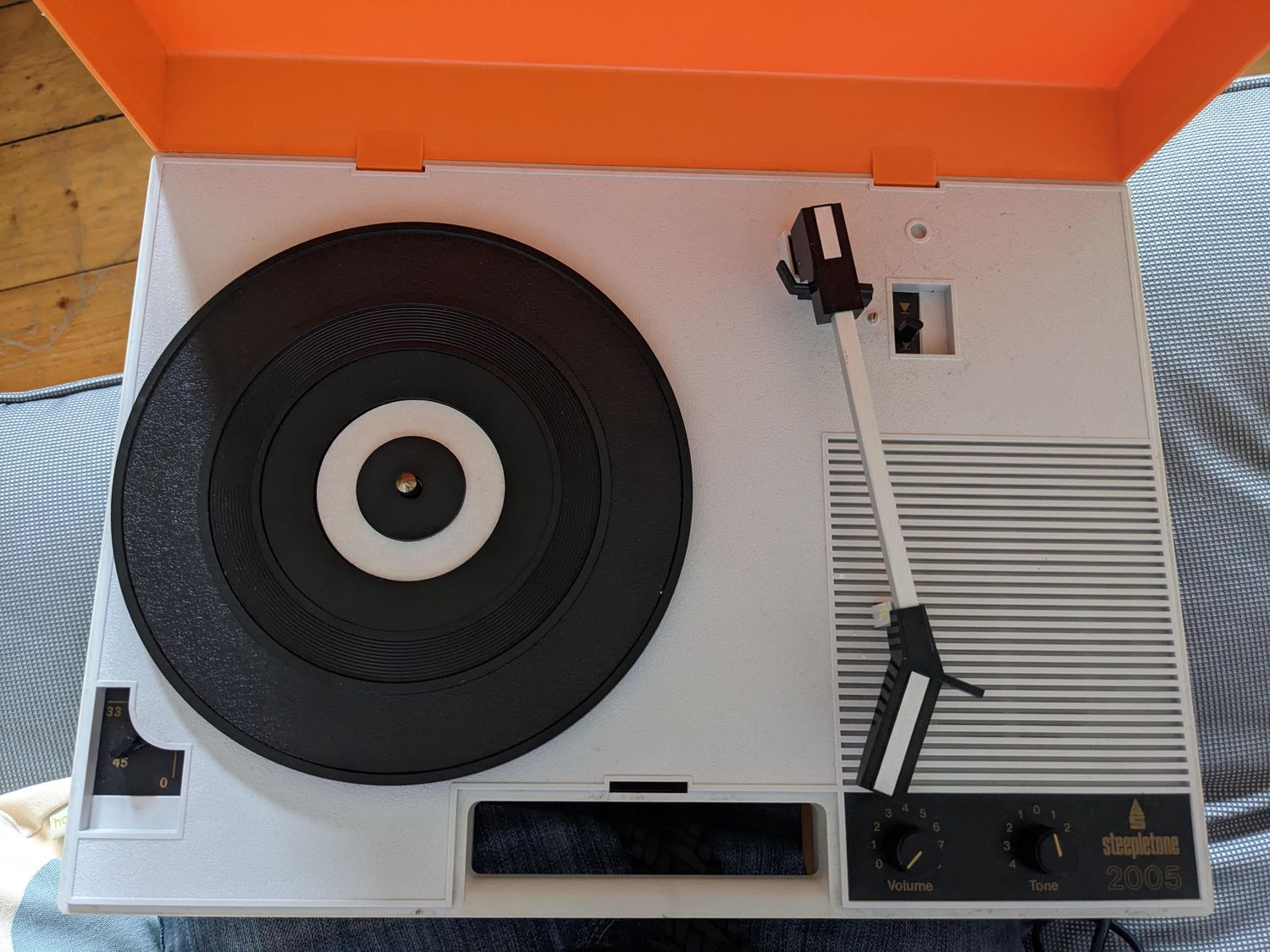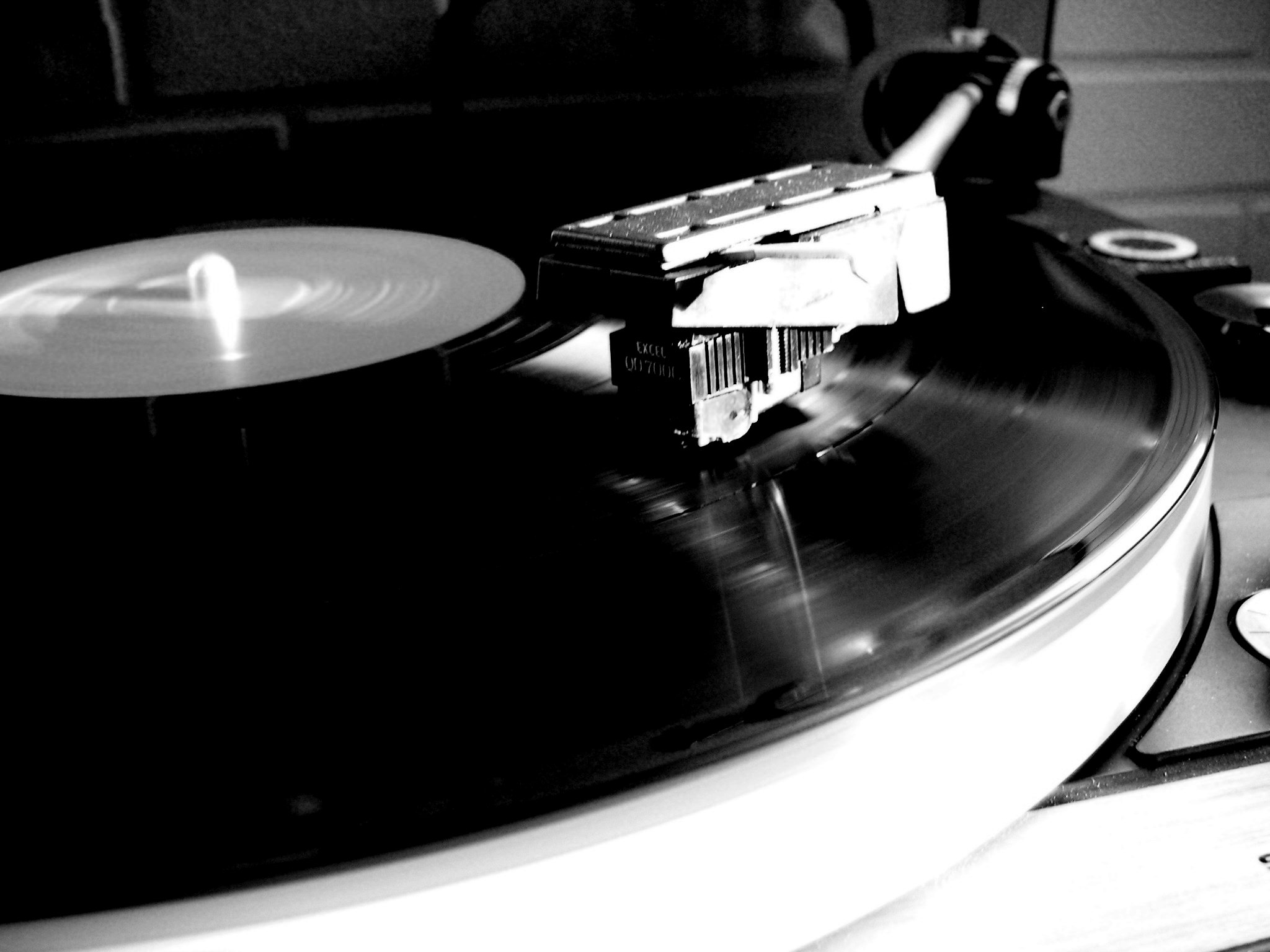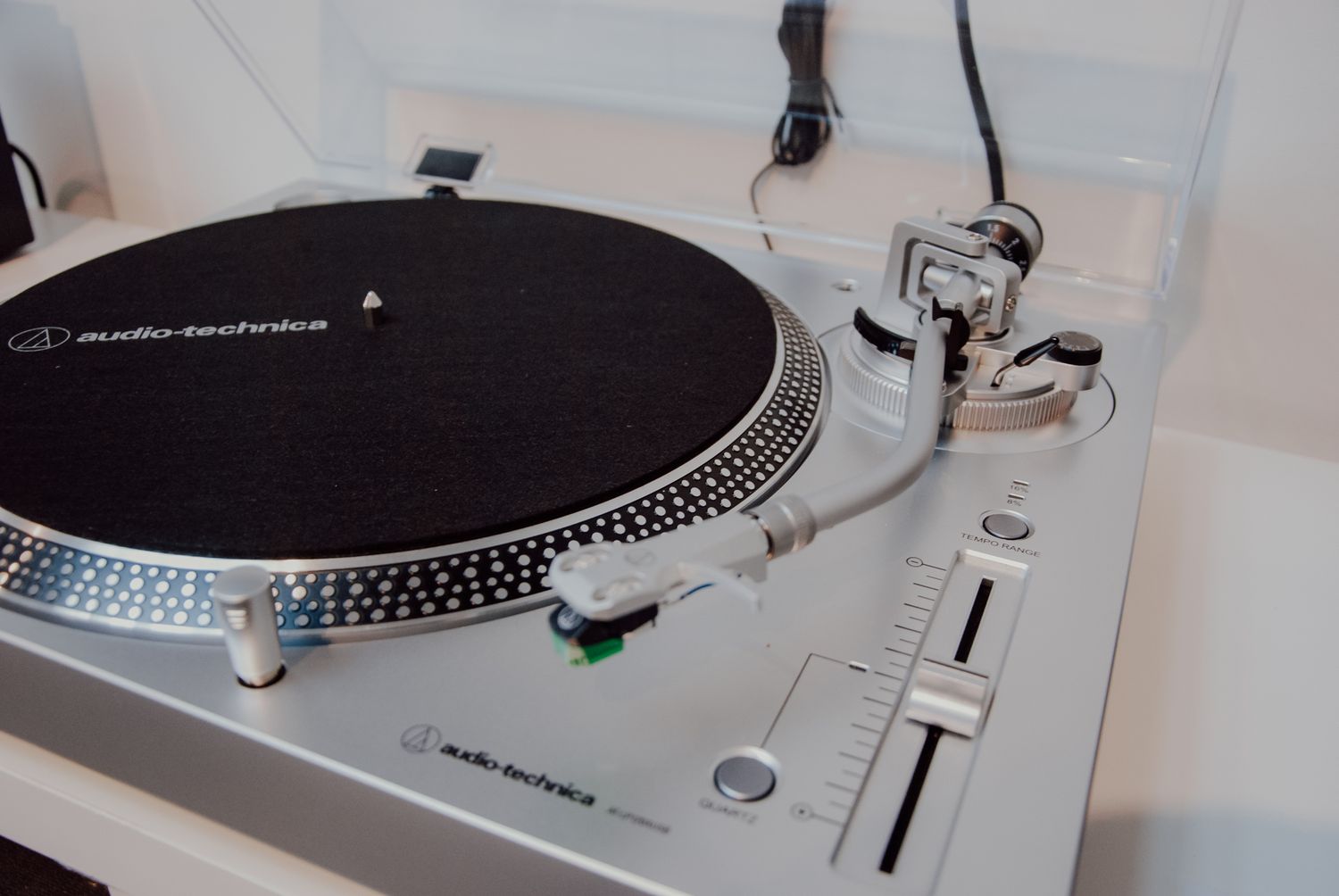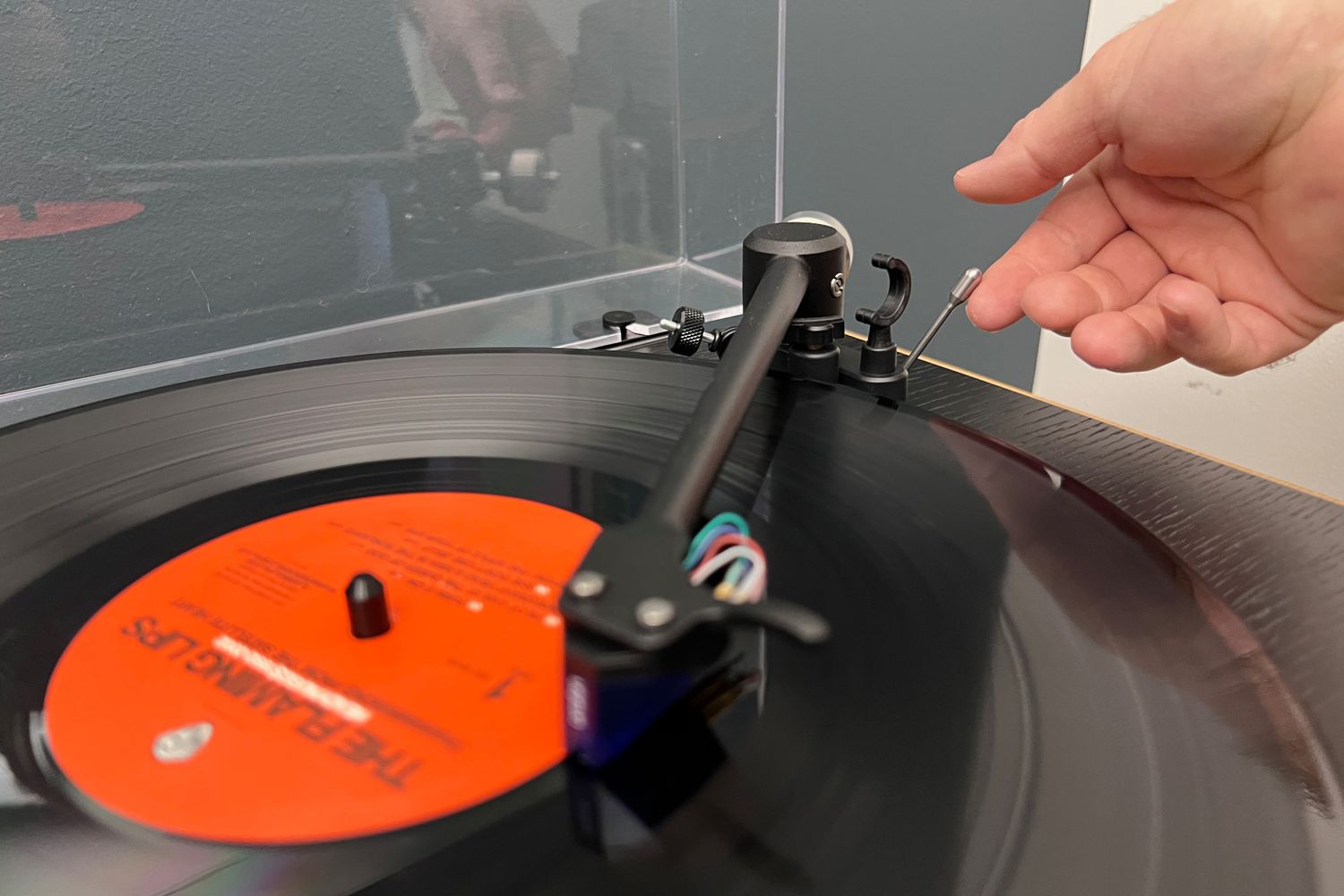Home>Devices & Equipment>Turntable>What Is A Turntable Headshell
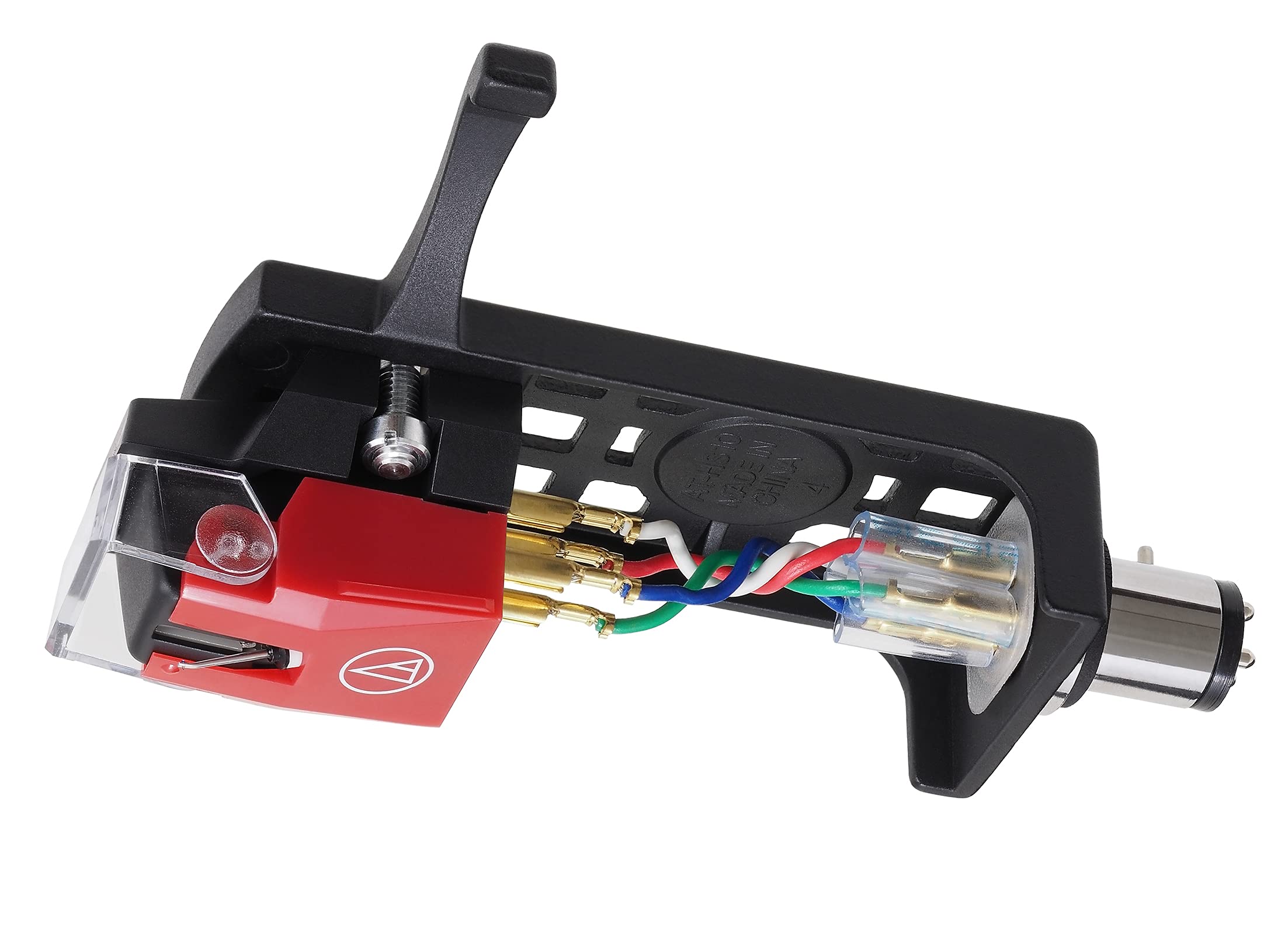

Turntable
What Is A Turntable Headshell
Modified: January 22, 2024
Discover what a turntable headshell is and why it's important for your vinyl setup. Explore the benefits and find the perfect turntable headshell for your needs.
(Many of the links in this article redirect to a specific reviewed product. Your purchase of these products through affiliate links helps to generate commission for AudioLover.com, at no extra cost. Learn more)
Table of Contents
- Introduction
- Definition of a Turntable Headshell
- Components of a Turntable Headshell
- Types of Turntable Headshells
- Importance of the Turntable Headshell
- How to Install and Remove a Turntable Headshell
- Maintenance and Care for a Turntable Headshell
- Troubleshooting Common Issues with Turntable Headshells
- Conclusion
Introduction
Welcome to the world of turntables, where the magic of vinyl truly comes to life. If you’re a music enthusiast or a vinyl collector, you know that a turntable is more than just a device – it’s a gateway to an immersive sonic experience. But have you ever wondered about the intricate components that make up a turntable and how they work together to produce that rich, warm sound? One crucial part of a turntable that often goes unnoticed is the headshell.
The headshell is a small but mighty component that plays a significant role in the overall performance of a turntable. It may seem like a simple piece, but its impact on the sound quality and functionality of a turntable cannot be overstated. In this article, we will delve into the fascinating world of turntable headshells, exploring their definition, components, types, importance, installation and removal, maintenance, and troubleshooting.
Whether you’re a seasoned audiophile or just starting your journey into the world of vinyl, understanding the headshell is essential for optimizing sound quality and ensuring proper maintenance of your turntable. So, let’s dig in and uncover the mysteries of the turntable headshell.
Definition of a Turntable Headshell
A turntable headshell is a small, removable component that holds the phono cartridge and stylus to the tonearm of a turntable. It serves as a crucial link between the cartridge and the tonearm, providing stability, alignment, and electrical connections. In simpler terms, the headshell acts as a bridge between the tonearm and the cartridge, allowing the stylus to track the grooves on the vinyl record and convert the vibrations into electrical signals.
The headshell is typically made of lightweight materials such as aluminum or magnesium alloy to minimize vibrations and resonance, both of which can negatively impact sound quality. It is designed to securely hold the cartridge in place while also allowing for easy installation and removal, facilitating cartridge upgrades or stylus replacements.
Furthermore, the headshell plays a crucial role in maintaining proper tracking force and alignment. Proper alignment is necessary to ensure accurate tracking of the stylus on the record’s grooves, resulting in optimal sound reproduction and reducing wear on both the record and the stylus. The headshell often includes adjustable screws or slots that allow for precise alignment adjustments, ensuring that the stylus sits at the correct angle and tracking force is set appropriately.
In summary, a turntable headshell is a vital component that connects the cartridge to the tonearm of a turntable, enabling the stylus to accurately track the grooves on a vinyl record. It provides stability, alignment, and electrical connections, all of which contribute to the overall performance and sound quality of a turntable.
Components of a Turntable Headshell
A turntable headshell may seem like a simple piece, but it consists of several essential components that work together to ensure proper performance and functionality. Let’s explore the key components of a turntable headshell:
- Cartridge Mounting Area: This is the section of the headshell where the cartridge is securely mounted. It typically consists of two or four small holes or slots that align with the corresponding mounting holes on the cartridge. The cartridge is attached to the headshell using screws or nuts to ensure a stable connection.
- Alignment Adjustments: The headshell often includes adjustable screws or slots that allow for precise alignment adjustments. These adjustments are crucial to ensure that the stylus sits at the correct angle and aligns perfectly with the record grooves. Proper alignment is essential for accurate tracking and optimal sound reproduction.
- Wiring Terminals: The headshell has wiring terminals where the electrical connections between the cartridge and the tonearm are established. These terminals are typically color-coded (red for right channel, white for left channel) for easy identification and ensure proper channel separation in stereo systems.
- Finger Lift: The finger lift is a small protrusion at the front of the headshell, designed to facilitate easy installation and removal of the headshell. It provides a convenient grip to lift and maneuver the headshell, making cartridge changes or stylus replacements a breeze.
- Headshell Shell: The headshell shell refers to the body of the headshell itself. It is typically made of lightweight materials such as aluminum or magnesium alloy to minimize vibrations and resonance that can affect sound quality. The shell is designed to provide stability to the cartridge and protect it from external disturbances during playback.
These components work together seamlessly to ensure proper mounting, alignment, electrical connections, and ease of use for a turntable headshell. Understanding these components will not only help you appreciate the engineering behind the headshell but also enable you to make informed decisions when it comes to choosing or upgrading your turntable setup.
Types of Turntable Headshells
Turntable headshells come in various designs and styles to accommodate different cartridges and tonearms. The type of headshell you choose can impact the overall sound quality, compatibility, and ease of use of your turntable setup. Let’s explore some common types of turntable headshells:
- Standard Screw-on Headshells: These are the most common type of headshells found in turntables. As their name implies, they feature a screw-on mechanism where the cartridge is attached to the headshell using screws. Standard screw-on headshells offer a secure and stable connection and are compatible with a wide range of cartridges. They are relatively easy to install and remove, making them suitable for both novice and experienced turntable users.
- P-Mount Headshells: P-Mount, also known as T4P, headshells are a specific type of headshell designed for use with P-Mount cartridges. P-Mount cartridges are characterized by their standardized connectors, making them effortless to install and remove. P-Mount headshells typically feature a simple plug-and-play design, eliminating the need for alignment adjustments. These headshells are commonly found in entry-level turntables, offering convenience and ease of use.
- Universal Headshells: Universal headshells are designed to accommodate a wide range of cartridges, making them highly versatile. They often feature adjustable mounting holes or slots that allow for compatibility with different cartridge models. Universal headshells give users the flexibility to switch between cartridges without the need for separate headshells for each. They are popular among audiophiles and professionals who frequently experiment with different cartridges.
- Bayonet Mount Headshells: Bayonet mount headshells offer a quick and secure cartridge attachment mechanism. Instead of using screws, these headshells have a bayonet-style connector that allows the cartridge to be easily inserted and locked in place. Bayonet mount headshells offer a tight and stable connection, minimizing vibrations and ensuring accurate tracking. However, they are less common and usually limited to specific turntable models.
- Integrated Headshells: Integrated headshells are permanently attached to the tonearm of the turntable and cannot be removed or replaced. These headshells are typically found in entry-level turntables or all-in-one systems, where the cartridge and headshell are integrated into the tonearm assembly. While they offer convenience and simplicity, they limit the ability to upgrade or customize the cartridge and headshell independently.
It’s important to consider the compatibility with your specific turntable, tonearm, and cartridge when choosing a headshell. Additionally, keep in mind your preferences and future upgrade possibilities. Understanding the different types of headshells will help you make an informed decision to optimize your turntable setup and achieve the best sound quality.
Importance of the Turntable Headshell
The turntable headshell may be a small component, but its significance in the overall performance and functionality of a turntable cannot be overlooked. Here are some key reasons why the headshell is crucial:
- Cartridge Mounting: The headshell serves as the platform for mounting the cartridge. It holds the cartridge securely in place, ensuring that it maintains the correct position and alignment. Proper cartridge mounting is essential for accurate tracking, optimal sound reproduction, and minimizing wear on the record and stylus.
- Alignment Adjustments: Many headshells have adjustment screws or slots to fine-tune the cartridge alignment. Correct alignment is vital for precise tracking of the stylus on the record grooves, resulting in clearer sound and minimizing distortion. The ability to make these adjustments allows you to optimize the performance of your turntable and tailor it to your listening preferences.
- Electrical Connections: The headshell provides the electrical connections between the cartridge and the tonearm. These connections transmit the tiny electrical signals generated by the stylus as it tracks the record’s grooves. Ensuring proper electrical connections is crucial for maintaining the integrity of the sound signal and achieving accurate playback of the music.
- Ease of Upgrades and Maintenance: The headshell allows for easy cartridge upgrades or stylus replacements. With a removable headshell, you can swap out cartridges to explore different sound characteristics, upgrade to a higher-quality cartridge, or replace a worn-out stylus. This flexibility ensures that your turntable can adapt to your evolving preferences and allows for proper maintenance and care of the cartridge and stylus.
- Vibration Dampening: The materials and design of the headshell play a role in minimizing vibrations and resonance. Vibrations can negatively impact sound quality by causing unwanted resonances, distortion, or skipping of the stylus. The headshell, often made from lightweight and vibration-resistant materials, helps to isolate the cartridge and minimize the transmission of vibrations from the turntable’s motor and external sources.
The headshell’s importance lies in its role as a crucial intermediary between the tonearm and the cartridge. It facilitates accurate tracking, precise alignment, and proper electrical connections, ensuring optimal sound quality and preserving the life of your records and stylus. Additionally, it offers flexibility for upgrades and maintenance, allowing you to customize and enhance your turntable setup over time.
How to Install and Remove a Turntable Headshell
Installing and removing a turntable headshell may seem like a daunting task, but with a few simple steps, you can easily accomplish it. Here’s a step-by-step guide:
- Ensure the turntable is turned off and unplugged: Before starting the installation or removal process, make sure the turntable is turned off and unplugged to avoid any electrical mishaps.
- Locate the headshell socket: Look for the headshell socket at the end of the tonearm. This is where the headshell is inserted and secured.
- Prepare the headshell: If you are installing a new headshell, make sure it is compatible with your cartridge and has the necessary wires attached. Some headshells come pre-wired, while others may require you to attach the cartridge wires yourself.
- Align the cartridge: If you are installing a new headshell or cartridge, align it properly using alignment tools or guides. This ensures accurate tracking and optimal sound quality. Make sure the cartridge is aligned parallel to the record grooves.
- Insert the headshell: Carefully insert the headshell into the headshell socket on the tonearm. Align the contacts or pins on the headshell with the corresponding slots or terminals in the socket. Gently push it in until you feel it seat securely.
- Secure the headshell: If your turntable has a locking mechanism, use it to secure the headshell in place. This can be a screw, a locking collar, or a bayonet-style twist and lock mechanism. Follow the specific instructions for your turntable model to ensure a secure connection.
- Connect the wires: If the headshell requires you to connect the cartridge wires, carefully attach the wires to the corresponding color-coded terminals on the headshell. Ensure a tight and secure connection.
- Test the playback: Once the headshell is installed and secure, power on the turntable and test the playback. Make sure the stylus tracks the record’s grooves accurately and that the sound is coming through both channels.
- Removing the headshell: To remove the headshell, follow the above steps in reverse. Turn off the turntable, unplug it, and gently unlock or unscrew the headshell. Then, carefully lift the headshell out of the socket.
It’s important to handle the headshell and cartridge with care during installation and removal to avoid damage. Take your time and follow the manufacturer’s instructions for your specific turntable model and headshell. With practice, installing and removing a turntable headshell will become a routine and straightforward process.
Maintenance and Care for a Turntable Headshell
Maintaining and caring for your turntable headshell is crucial for ensuring optimal performance and longevity. Here are some essential maintenance tips to keep your headshell in top condition:
- Cleaning: Regularly clean the headshell to remove dust, dirt, and debris that can affect the sound quality. Use a soft brush or a microfiber cloth to gently wipe away any buildup. Avoid using harsh chemicals or abrasive materials that can damage the headshell’s finish.
- Stylus Cleaning: As the stylus contacts the record, it can accumulate dust and debris. Clean the stylus regularly using a stylus brush or a stylus cleaning solution. Gently brush the stylus from back to front to remove any residue, ensuring it stays in optimal condition for accurate tracking and sound reproduction.
- Protection: When not in use, protect the headshell by using a dust cover or a protective case. This prevents dust, accidental bumps, and damage to the delicate components of the headshell.
- Alignments Check: Periodically check the alignment of the cartridge to ensure accurate tracking. Use alignment tools or guides to align the cartridge parallel to the record grooves. Proper alignment prolongs the life of your records and stylus while enhancing sound quality.
- Check Connections: Regularly inspect the wiring connections between the headshell and cartridge. Ensure they are secure and free of any loose or frayed wires. Loose connections can impact the sound quality and may require re-soldering or tightening if necessary.
- Tracking Force Adjustment: Monitor and adjust the tracking force as needed. Excessive tracking force can lead to premature wear on the stylus and records, while insufficient force can result in tracking issues. Refer to your turntable’s manual for instructions on tracking force adjustment and use a digital stylus force gauge for accuracy.
- Replacement: Over time, the headshell’s components, such as the wires or terminals, may wear out or become damaged. If you notice any degradation in sound quality or connectivity issues, consider replacing the headshell or seeking professional repairs.
- Professional Maintenance: If you are unsure about handling the maintenance tasks yourself or encounter more complex issues, it is advisable to seek professional help. A qualified technician can perform routine maintenance, check alignment, and address any specific concerns you may have.
By following these maintenance tips and regularly caring for your turntable headshell, you can ensure optimal performance, extend the lifespan of your cartridge and stylus, and enjoy a high-quality vinyl listening experience for years to come.
Troubleshooting Common Issues with Turntable Headshells
While turntable headshells are designed to provide reliable performance, occasional issues may arise. Here are some common problems that you may encounter with a turntable headshell and potential troubleshooting steps:
- Loose Headshell: If the headshell feels loose or wobbly, it may affect the cartridge alignment and sound quality. Ensure that the headshell is securely attached to the tonearm. If necessary, tighten the locking mechanism or screws to stabilize the headshell.
- Uneven Tracking or Skipping: If the turntable is experiencing uneven tracking or skipping, it could be due to improper cartridge alignment. Check the alignment of the cartridge using alignment tools or guides to ensure it is parallel to the record grooves. Adjust the alignment if necessary, following the manufacturer’s instructions.
- Intermittent Sound or Channel Imbalance: If you’re experiencing intermittent sound or channel imbalance, it could be a result of loose or faulty wiring connections. Ensure that all the wires are securely connected to the headshell’s terminals. If the issue persists, inspect the wires for any damage or fraying and consider replacing them if necessary.
- Excessive Hum or Noise: Excessive hum or noise can be caused by various factors, including poor grounding or interference. Check the grounding connection from the turntable to the amplifier or receiver. Make sure it is properly connected and free from any loose or corroded connections. Properly positioning the turntable away from sources of electrical interference, such as speakers or power supplies, can also help minimize noise.
- Poor Sound Quality: If you’re experiencing poor sound quality, it could be a result of worn-out or damaged stylus or cartridge. Check the condition of the stylus and cartridge and consider replacing them if they show signs of wear or damage. Additionally, ensure that the tracking force and anti-skate settings are properly adjusted for optimal sound reproduction.
- Dislodged or Damaged Headshell Wires: Occasionally, the wires connecting the cartridge to the headshell may become loose or damaged. If you suspect a problem with the wires, carefully inspect them for any signs of damage or loose connections. If necessary, reattach or replace the wires, ensuring proper soldering and secure connections.
If you encounter persistent issues with your turntable headshell that you cannot resolve on your own, it is recommended to seek assistance from a qualified technician or turntable specialist. They can diagnose the problem and provide appropriate solutions to restore optimal performance to your turntable and headshell.
Conclusion
The turntable headshell may be a small and often overlooked component, but its role in the performance and functionality of a turntable is paramount. Understanding the definition, components, types, importance, installation and removal, maintenance, and troubleshooting of a turntable headshell is essential for any vinyl enthusiast.
The headshell serves as the bridge between the tonearm and the cartridge, providing stability, alignment, and electrical connections. It allows for precise tracking, accurate playback, and optimal sound reproduction. The headshell’s design, materials, and compatibility with different cartridges and tonearms further enhance its performance and functionality.
Proper maintenance and care of the headshell are crucial for preserving its longevity and ensuring optimal performance. Regular cleaning, stylus maintenance, alignment checks, and ensuring secure connections are key aspects of headshell maintenance. Troubleshooting common issues such as loose headshells, tracking problems, sound imbalance, or poor sound quality can help optimize your vinyl listening experience.
In conclusion, the turntable headshell is a small but essential component that plays a significant role in the performance and functionality of a turntable. By understanding its importance and taking proper care of it, you can enjoy the full potential of your turntable setup, unlock the rich, warm sound of vinyl, and indulge in the timeless joy of music.

